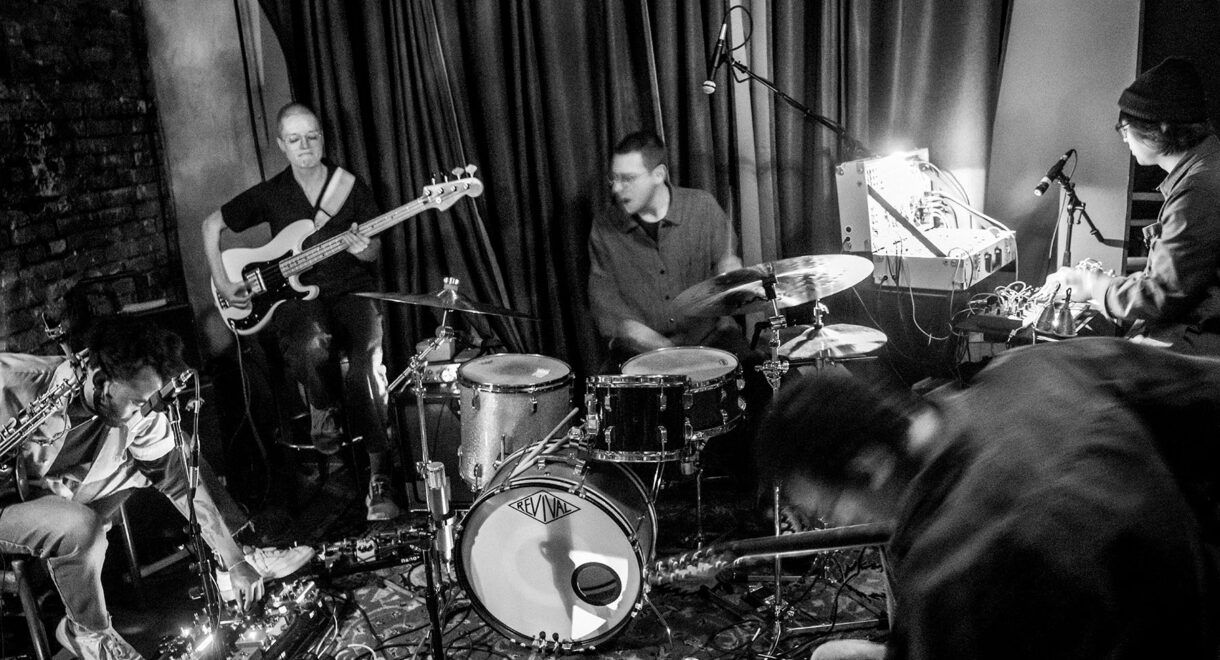A new documentary about the Sun Ra Omniverse is currently in production. Support the Kickstarter today! In partnership with the SUN RA Estate and veteran bandleader, Marshall Allen, […]
Moon is the Oldest TV: Nam June Paik plays with music in essential new doc

A look at the experimental musician and video artist’s work and influence (and featuring a Peter Brötzmann cameo)
This week the renowned American Masters series on PBS premiered Moon is the Oldest TV, a fascinating documentary on the pioneering video artist and experimental musician Nam June Paik, whose work with televisions and video art starting in the 1950s involved hacking the mass market technology –– deconstructing the boxes and exploring their innards, distorting signals with magnets –– to exploit its untapped power.
Trained as a classical pianist, Paik played with music his entire life, most notably through his longtime collaborator, the classical cellist Charlotte Moorman, and via the ideas of his mentor and benefactor, John Cage. Paik’s experience at a concert featuring Cage and David Tudor transformed his art, and a relationship with sound drove many of his projects.
Those who don’t know Paik’s biography will be surprised when, during the American Masters doc, the brilliant free jazz saxophonist Peter Brötzmann (Last Exit, Die Like a Dog Quartet) is interviewed. Like Brötzmann’s aggressive approach to sax and clarinet, Paik was happy to disassemble his medium of choice as a means of better understanding it.
Watch the documentary here.
The two met in the early 1960s. Paik and Brötzmann were both living in Berlin and trying to make it as visual artists. Brötzmann was hired to assist Paik in preparing Paik’s first installation, Exposition of Music-Electronic Television, in 1963.
They became friends in the process. Jazz writer and producer John Corbett wrote about the effect their friendship had on each others’ art.
One evening in the mid 1960s, Nam June Paik had dinner at Peter and Krista Brötzmann’s flat on Siegesstraße. Peter had worked with Paik at Galerie Parnasse, also in Wuppertal, where the Korean-born artist mounted his earliest installations. On the apartment walls hung some of Brötzmann’s own work, which at the time featured a repeated rectangular shape – a fly-swatter or maybe, he now remembers, a spatula – and various circular forms, often etched into not-yet-dry paint. Paik was taken with these and apparently informed Brötzmann: “Great! Now you are the one who paints circles.”
That evening may have altered Brötzmann’s aesthetic, Corbett argued. “If you look closely at Brötzmann’s work after that, you don’t find a preponderance of circles. Indeed, that statement might very well have put an end to the legendary Brötzmann Circle before it could even become a ‘thing.'”
Those looking to delve into Paik’s profoundly influential work would do well to set aside time to watch Moon is the Oldest TV. It’s a revelation.










